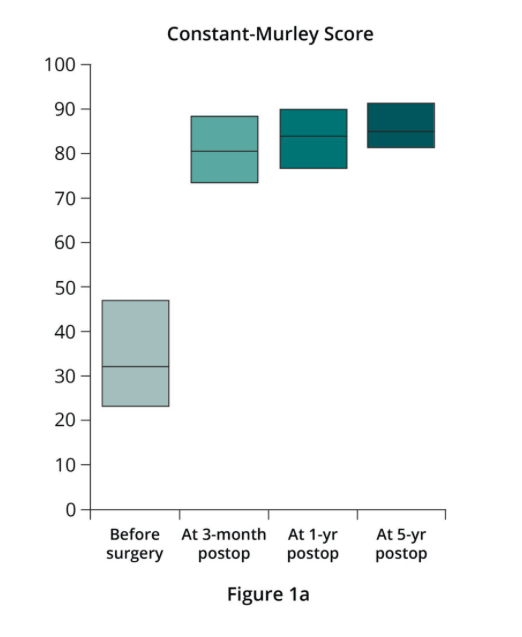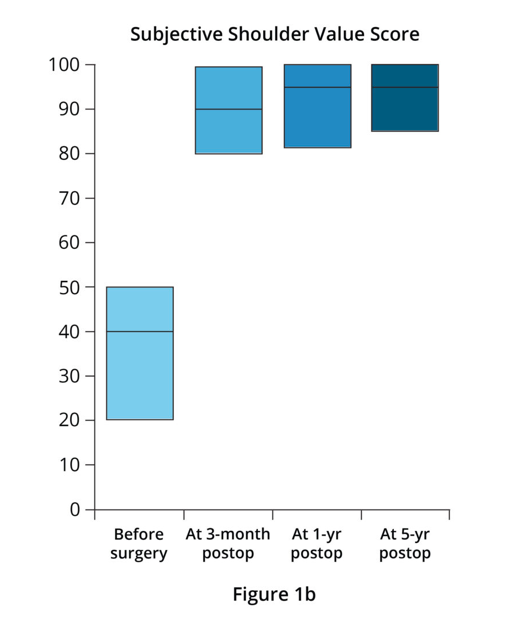
Benefits
14% in massive cuff tears, over 5-year follow-up. This is substantially below the published levels for cuff repair without augmentation or with bioresorbable patches, reported up to 94%.
Very high strength of 355 N when fully sutured along the medial and lateral edges.
Function and pain reduction scores improved over at least five years postoperatively.
Suitable for arthroscopic or open technique:
- Long shelf life, no special storage or pre-operative preparation.
- Anatomical design in two sizes for varying patient anatomy and tear size.
- Intra-operative decision on whether reinforcement is needed.
Indicated for patients where either the rotator cuff tear cannot be completely repaired using normal methods and/or the quality of the soft tissue is poor.
The device structure allows a natural body response whereby native tissue integrates into the device.
Pitch-Patch Rotator Cuff Reinforcing Patch
The patch is made from non-absorbable polyester (poly (ethylene terephthalate) fibres) creating a durable reinforcement for the repair. After repairing the rotator cuff tear, the surgeon selects the size of Pitch-Patch required. The medial edge of the patch is sutured to the tendon and the lateral edge then attached to the bone, typically with anchors. Anterior and posterior edges are then attached to the tendon. Once in place, the patch reinforces the tendon.
The patient can then follow the same rehabilitation plan as for the cuff repair without reinforcement, with no impact on their recovery programme. See rehabilitation guidelines.
Clinical Data Summary
A prospective study on the repair of massive cuff tears reinforced with Pitch-Patch has been conducted, with results reported at a minimum of five-years2 post surgery. The excellent functional outcomes continued to improve between the one-year and five-year timepoints (figure 1). There was only 14% re-tear rate1 and only one of those cases requiring a second surgery, compared to re-tear rates up to 94 % reported in the literature3 for repair of massive tears.
A separate retrospective study4 followed a group of patients with short tendon length (14 mm or less), with significant improvement in functional and structural outcomes. There were only three clinical failures (20%). Re-tears occurred in 53% of patients, but these were not associated with inferior outcomes compared with intact cuff repairs. Speak with a specialist for more detail on the clinical data relevant to Pitch-Patch.
Figure 1a, 1b. Shoulder function scores for rotator cuff repair augmented by Pitch-Patch, before surgery, 3-month, 1-year and 5-years post-operatively, n=50. The box plots span the interquartile range. The horizontal line inside the box represents the median. (a) Constant-Murley Scores (b) Subjective Shoulder Value scores2.


The Pitch-Patch is indicated for patients requiring reinforcement of the rotator cuff tear repair where either the tear cannot be completely repaired using normal methods and / or the quality of the soft tissue is poor.
The Pitch-Patch is a single use device intended to be used for reinforcement of the rotator cuff following or during repair by suture or suture anchors, where weakness exists in the soft tissue.
The Pitch-Patch is not intended to replace normal body structure or provide the full mechanical strength to support the rotator cuff. Sutures, used to repair the tear, and sutures or bone anchors, used to attach the tissue to the bone, provide mechanical strength for the repair. The Pitch-Patch reinforces the rotator cuff and provides a scaffold that is incorporated into the patient’s own tissue.
To view the instructions for use please visit our IFU library.
Instructions for Use- 102-1090 Pitch-Patch, Standard (30 mm x 20 mm)
- 102-1091 Pitch-Patch, Large (35 mm x 25 mm)

